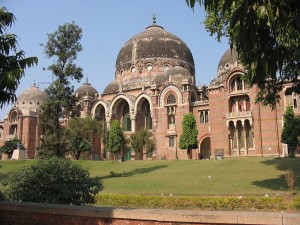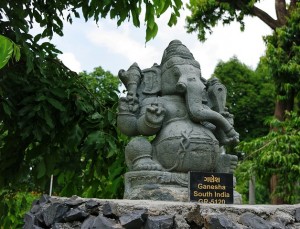The City of Vadodara or Sanskar Nagari
 Being the number one industrial center in Gujarat, it still has the legacy of the dynasty Gekvadov once ruled Vadodara. They made their capital, and gave it the second name – Baroda, which is sometimes used today. The city has several parks, fine museums and spectacular beauty of the palaces, such as the House of Lakshmi Pratap Palace. Certainly you should visit Baroda Museum and Art Gallery.
Being the number one industrial center in Gujarat, it still has the legacy of the dynasty Gekvadov once ruled Vadodara. They made their capital, and gave it the second name – Baroda, which is sometimes used today. The city has several parks, fine museums and spectacular beauty of the palaces, such as the House of Lakshmi Pratap Palace. Certainly you should visit Baroda Museum and Art Gallery.
Modern Baroda is a great memorial of its last ruler of Sayadzhi Rao Gekvod III (1875-1939). The dream of this talented ruler was to construct Baroda like educational, industrial and business center. The dream had come true.
 Baroda is situated on the banks of the river Visvamitra, the name of which comes from the name of the Saint Rishi Viswamitra. Earlier the city was known as Chandravati, on behalf of the ruler Raja Chandan, then Viravati, which means “abode of brave” and later the city was given the name of Vadparta because of the abundance of Banyon trees growing along the banks of the river Visvamitra. The modern Baroda and Vadodara were formed from this last name.
Baroda is situated on the banks of the river Visvamitra, the name of which comes from the name of the Saint Rishi Viswamitra. Earlier the city was known as Chandravati, on behalf of the ruler Raja Chandan, then Viravati, which means “abode of brave” and later the city was given the name of Vadparta because of the abundance of Banyon trees growing along the banks of the river Visvamitra. The modern Baroda and Vadodara were formed from this last name.
The city of Baroda has a rich history. Historians can trace the history of Baroda for over 2000 years. However, recent significant events are related to 1732, when the Mughal rule came to an end with the penetration of the Marathas in the south of Gujarat and its subsequent capture. Except the short break, Baroda was under the auspices of Gekvodov in the period from 1734 to 1949.
 Rise of Maratha rule in Baroda came with the power of Maharaja Sayaji Rao III in 1875. This was the era of great progress and constructive achievements in all areas.
Rise of Maratha rule in Baroda came with the power of Maharaja Sayaji Rao III in 1875. This was the era of great progress and constructive achievements in all areas.
Maharaja Sayaji Rao was one of the greatest reformers. He introduced a number of socio-economic reforms. He believed that economic development was very important and had launched a number of industries on the basement of privacy. He laid the foundation for the production of textiles and ceramics. The fact that today Baroda is among the most important centers of textile, chemical and petroleum industries, is the result of Maharaja’s policy. He also presented a series of social reforms.
It was Sayaji Rao who presented a general scheme of development of all educational branches. Modern Baroda owes its beauty, educational institutions and the architectural masterpieces to the great insight of its ruler.
 There is a saying that any other plant does not grow under the banyan tree, but it can’t be applied to Baroda. Having witnessed the rise and fall of empires and kingdoms of the Hindus, Pathans, Mughals and Marathas, the city occupies a unique position in the cultural, educational and industrial map of India. The city managed to preserve the beauty of its rich and varied past.
There is a saying that any other plant does not grow under the banyan tree, but it can’t be applied to Baroda. Having witnessed the rise and fall of empires and kingdoms of the Hindus, Pathans, Mughals and Marathas, the city occupies a unique position in the cultural, educational and industrial map of India. The city managed to preserve the beauty of its rich and varied past.
Residents of Baroda like to present to visitors their city as “Sanskar Nagari” which could be translated like “cultural city”. Most visitors agree with them. The city has the rich cultural traditions indeed. And today people lead an active cultural life throughout the year.
It can’t but mention that the cultural life in Baroda is rather cosmopolitan. And despite the hundreds of individuals, each resident participates in all activities. Therefore, culture is not a history or heritage, but the dynamic, ever-changing present.
/a